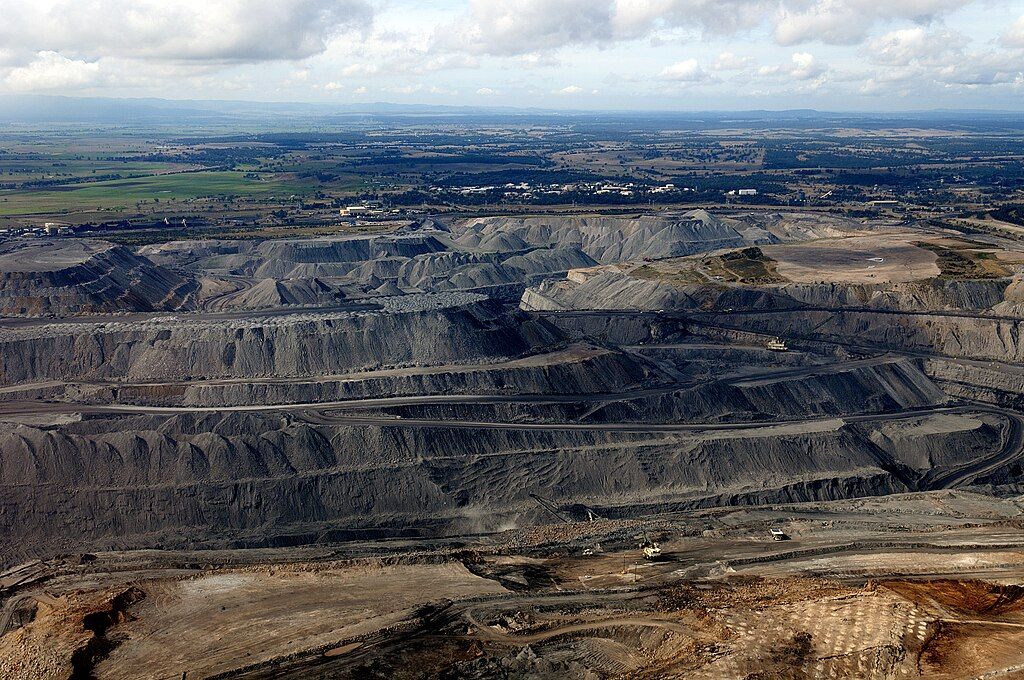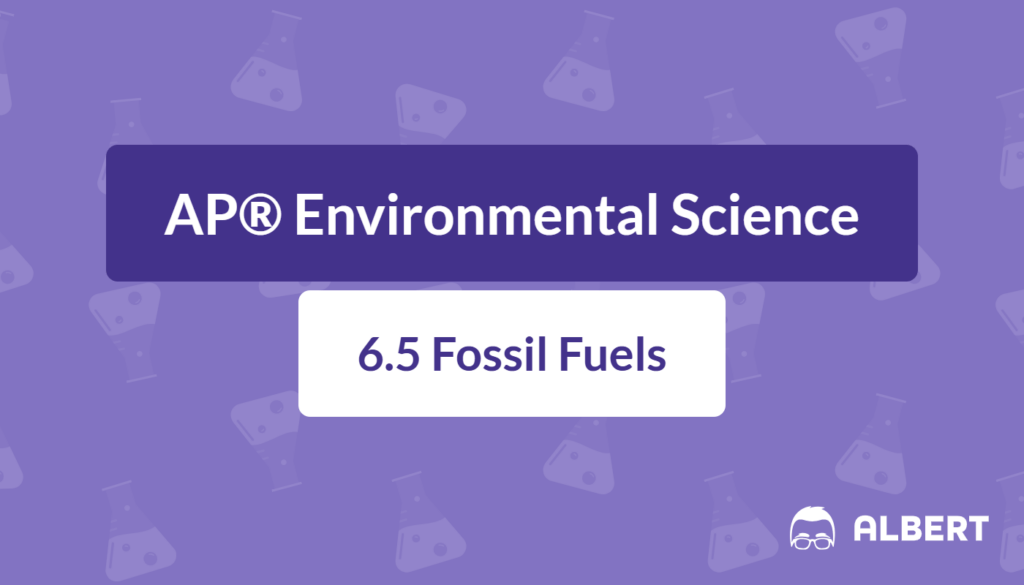What We Review
Introduction
Fossil fuels are central to modern civilization, providing a significant portion of the global energy supply. They power factories, fuel transportation networks, and heat countless homes worldwide. Although renewable energy sources are gaining momentum, fossil fuels remain dominant in energy production. Therefore, it is critical to understand what fossil fuels are, how they are used, and the environmental consequences of their extraction and combustion. This knowledge is particularly relevant for AP® Environmental Science, where students examine human energy choices and their broader ecological implications.
What Are Fossil Fuels?
Fossil fuels are natural substances created from the remains of ancient plants and animals that were buried under layers of sediment. Over millions of years, heat and pressure transformed these organic materials into high‑energy resources. The primary types of fossil fuels are coal, oil, and natural gas. Each one differs in its composition and formation process, but all three store chemical energy that can be released through combustion.
Types of Fossil Fuels
- Coal: A solid, carbon‑rich material typically mined from underground seams.
- Oil (Petroleum): A liquid mixture of hydrocarbons pumped from reservoirs located in sedimentary rock formations.
- Natural Gas: A gaseous fossil fuel, primarily composed of methane, which is often found in conjunction with oil deposits.

Geological processes ultimately determine where these fuels become trapped underground, which dictates the methods and challenges associated with their extraction. Therefore, understanding their formation helps explain the limited distribution and finite nature of these energy sources.
What Are Fossil Fuels Used For?
Fossil fuels have a range of applications that remain prevalent in daily life. Their high energy density makes them suitable for large‑scale electricity production and other energy‑intensive purposes. Although cleaner and more sustainable alternatives are emerging, current infrastructure still relies heavily on these fuel sources.
Energy Production
Burning fossil fuels efficiently converts chemical energy into usable forms of power. Many power plants generate electricity by combusting coal or natural gas to produce heat. That heat then turns water into steam. Next, the steam rotates a turbine, which drives a generator to produce electricity. The basic steps include:
- Combustion of fossil fuels to generate heat.
- Conversion of water into pressurized steam.
- Turbine rotation through the force of steam.
- Electrical generation from the mechanical energy of the turbine.
These steps highlight how a familiar resource, such as coal, becomes electric energy for lighting homes or powering electronic devices. Consequently, industries requiring continuous and large‑scale power, such as steel manufacturing or chemical production, continue to rely on fossil fuels for meeting their operational demands.
Transportation
Many modern vehicles, including cars, buses, and airplanes, run primarily on gasoline or diesel, both of which are derived from crude oil. The chemical energy in these fuels is released through combustion inside an engine. That combustion moves pistons or turbines, enabling mechanical work that propels vehicles. Although electric vehicles have gained popularity, transportation systems around the world still heavily depend on oil‑based fuels, which underscores fossil fuels’ persistent importance.
Heating
Fossil fuels, particularly natural gas, are commonly used for residential and commercial heating. Furnaces burn these fuels to create heat, which is then distributed through heating systems. However, reliance on these fuels for temperature control can contribute to carbon dioxide emissions. Therefore, some regions are studying alternatives—such as electric heat pumps or solar‑powered water heaters—to reduce fossil fuel consumption.
How Fossil Fuels Are Extracted
Extraction methods for fossil fuels vary based on the type of resource and geological formations. Standard methods such as mining and drilling are commonplace, yet newer techniques have emerged to tap into previously unreachable reserves. These innovations can improve supply yet also introduce environmental concerns.
Conventional Methods
- Mining (Primarily for Coal): Surface mining removes overlying soil and rock to access coal seams. Meanwhile, underground mining extracts coal by tunneling into the earth. Both methods have environmental impacts, such as habitat disruption and potential acid mine drainage.
- Drilling (Primarily for Oil): Wells are drilled into oil reservoirs. A pump system brings the oil to the surface. This process can be conducted on land or offshore, where rigs operate in marine environments.
Hydraulic Fracturing (Fracking)
Hydraulic fracturing, often called fracking or hydrologic fracturing, is a more recent extraction technique. It involves injecting pressurized water, sand, and chemicals deep into the earth to create fractures in rock formations. These fractures allow trapped oil or natural gas to flow more freely and thus be collected. However, fracking has generated controversy due to its potential environmental effects. It can lead to groundwater contamination and the release of volatile organic compounds. Therefore, understanding the trade‑offs between energy demand and environmental protection is crucial when evaluating this method.
Step‑by‑Step Fracking Process
- A well is drilled into shale or another rock formation.
- A fluid mixture containing water, sand, and additives is pumped at high pressure.
- Cracks form in the rock, releasing trapped oil or gas.
- The fuel is collected at the surface, and the wastewater is extracted for disposal or reuse.
These steps highlight why fracking controversially expands fossil fuel production, yet also poses risks to water supplies and air quality.
Environmental Effects of Fossil Fuels
Fossil fuels significantly affect the environment, both during extraction and through their combustion. Therefore, appreciating these impacts is critical for understanding broader climate dynamics, pollution, and resource depletion.
Emission of Carbon Dioxide
During combustion, fossil fuels react with oxygen to release carbon dioxide, water, and energy. The simplified chemical reaction for combustion can be written as:
\text{Fuel} + \text{O}_2 \rightarrow \text{CO}_2 + \text{H}_2\text{O}Thus, burning fossil fuels for electricity, transportation, or heating releases carbon dioxide into the atmosphere. High concentrations of this greenhouse gas intensify the natural greenhouse effect, contributing to climate change. Therefore, evolving energy policies often focus on reducing carbon dioxide emissions through measures such as carbon capture or shifting to cleaner energy sources.
Water Pollution and Groundwater Contamination
Extracting and processing fossil fuels typically consumes large volumes of water. Additionally, accidents can result in oil spills or leaks from pipelines, contaminating water sources and harming aquatic life. Hydraulic fracturing also poses distinct risks. In some cases, fracking fluid can migrate and pollute groundwater aquifers, endangering drinking water quality. Therefore, careful management, proper regulations, and continuous monitoring are necessary to protect water resources.
Climate Change
Rising concentrations of greenhouse gases, such as carbon dioxide, are altering weather patterns, melting polar ice, and contributing to sea‑level rise. These effects underscore the connection between fossil fuel combustion and global warming. Therefore, strategies that reduce dependence on fossil fuels, like energy conservation and renewable energy adoption, can mitigate the severity of climate change and enhance environmental resilience.
Conclusion
Fossil fuels remain prominent in the global energy landscape despite their environmental drawbacks. They are, by far, one of the most significant energy sources for power generation, transportation, and heating. Nevertheless, the environmental challenges associated with extraction and combustion—such as groundwater contamination, air pollution, and climate change—require ongoing scrutiny. Recognizing the complexities of fossil fuels and considering future pathways is essential. Embracing renewable energy alternatives, improving energy efficiency, and refining pollution controls are steps that can help balance energy needs with planetary health.
Important Vocabulary
- Fossil Fuels: Natural substances formed from decomposed organic materials, used for energy.
- Carbon Dioxide: A greenhouse gas emitted when fossil fuels are combusted.
- Hydraulic Fracturing (Fracking): A method of extracting fossil fuels from underground by injecting high‑pressure fluid.
- Combustion: A chemical reaction that produces energy, water, and carbon dioxide from fossil fuels.
- Greenhouse Gas: A gas that traps heat in the atmosphere and contributes to global warming.
- Renewable Energy: Energy derived from sources that are naturally replenishing, such as solar or wind power.
Sharpen Your Skills for AP® Environmental Science
Are you preparing for the AP® Environmental Science test? We’ve got you covered! Try our review articles designed to help you confidently tackle real-world AP® Environmental Science problems. You’ll find everything you need to succeed, from quick tips to detailed strategies. Start exploring now!
- AP® Environmental Science: 6.2 Review
- AP® Environmental Science: 6.3 Review
- AP® Environmental Science: 6.4 Review
Need help preparing for your AP® Environmental Science exam?
Albert has hundreds of AP® Environmental Science practice questions, free response, and full-length practice tests to try out.








